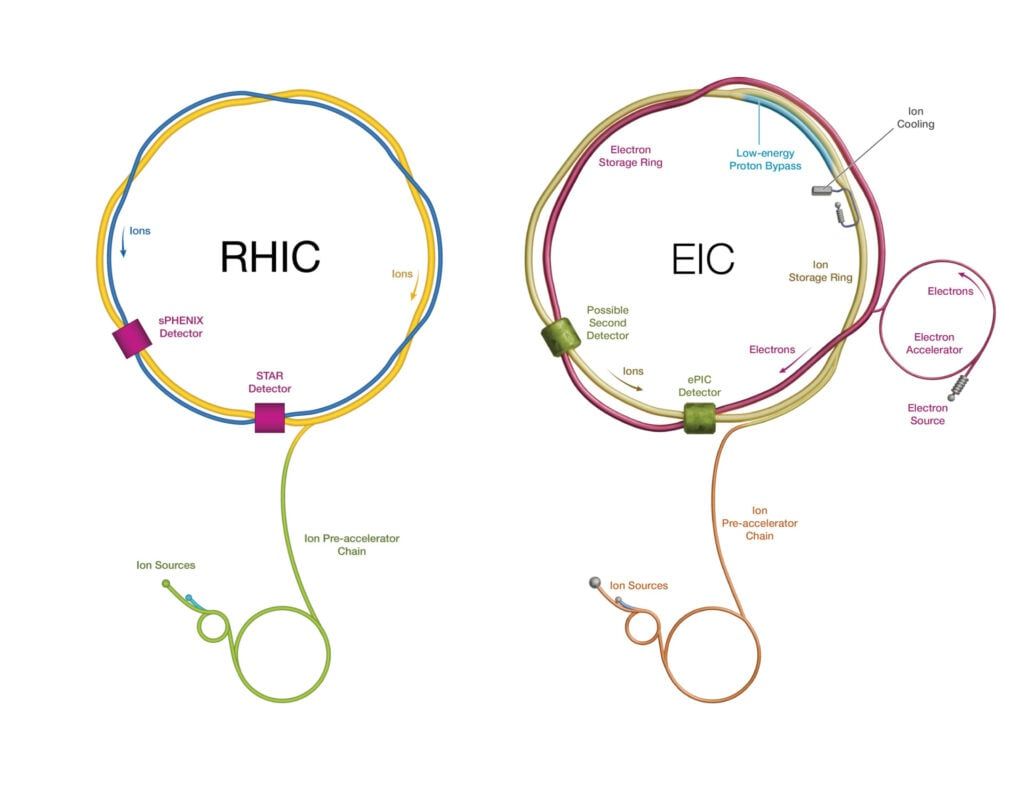
Relativistic Heavy Ion Collider Retires: A Look Back and Future Prospects
After a quarter-century of smashing gold nuclei together at near-light speeds, the Relativistic Heavy Ion Collider (RHIC) at Brookhaven National Laboratory is concluding its groundbreaking research. The 25th and final run of this collider marks the end of an era, paving the way for its transformation into the Electron-Ion Collider (EIC).
A Legacy of Quark-Gluon Plasma Research
Throughout 2025, RHIC physicists will focus on gathering comprehensive data about quark-gluon plasma, the primordial soup of particles that existed in the universe's infancy. "The primary goal of RHIC was to recreate, for the first time on Earth, the quark-gluon plasma, a state of matter present microseconds after the Big Bang, and we succeeded," explained James Dunlop, Associate Department Chair for Nuclear Physics at Brookhaven Lab. "One of RHIC's major achievements is not only creating the quark-gluon plasma but also discovering that its properties are significantly different from initial predictions."
Dunlop likened the discovery to finding that boiling water results in a substance more fluid than water itself. The quark-gluon plasma behaves as the most perfect liquid known.
Final Run Priorities
The final run's main focus is gold-on-gold collisions at energies of 200 billion electron volts. These collisions will be conducted until June, with a break during the hot summer months of July and August. The goal is to gather observations from 10 billion events, according to Lijuan Ruan, co-spokesperson for the collider’s STAR detector.
"We also plan to use our detector's triggers—sensors that analyze collision characteristics in real time—to collect a large number of events enriched with high-energy particles," Ruan added.
Collaboration and Future Research
Like the Large Hadron Collider at CERN, RHIC utilizes multiple experiments to extract data from collisions. In its final run, the collider's sPHENIX detector aims to capture data from approximately 50 billion collision events to study quark-gluon plasma. Megan Connors, a physicist at Georgia State University and co-spokesperson of sPHENIX, stated, "By combining RHIC measurements with high-energy experiments at the Large Hadron Collider, which produces QGP at higher temperatures, we can improve our understanding of how this exotic matter behaves as its temperature changes."
Transition to the Electron-Ion Collider (EIC)
After the RHIC's final run, Brookhaven will repurpose the collider into the Electron-Ion Collider (EIC). This transition will involve reusing existing components and adding new ones to accelerate electrons. The EIC will be tasked with investigating the internal structure of atomic nuclei, protons, and neutrons, with a specific focus on the strong nuclear force that binds quarks together.
"From RHIC to EIC, scientists are charting the transition of nuclear matter from a hot, dense state, generated in gold-gold collisions, to using electrons—the smallest projectiles—to probe cold nuclear matter at the EIC," said sPHENIX co-spokesperson Jin Huang.
This fundamental research has implications for nuclear physics projects and understanding the primordial soup of particles that existed at the universe's dawn. Such basic research is essential, provided that science labs receive adequate resources.
1 Image of RHIC Retirement:


Source: Gizmodo